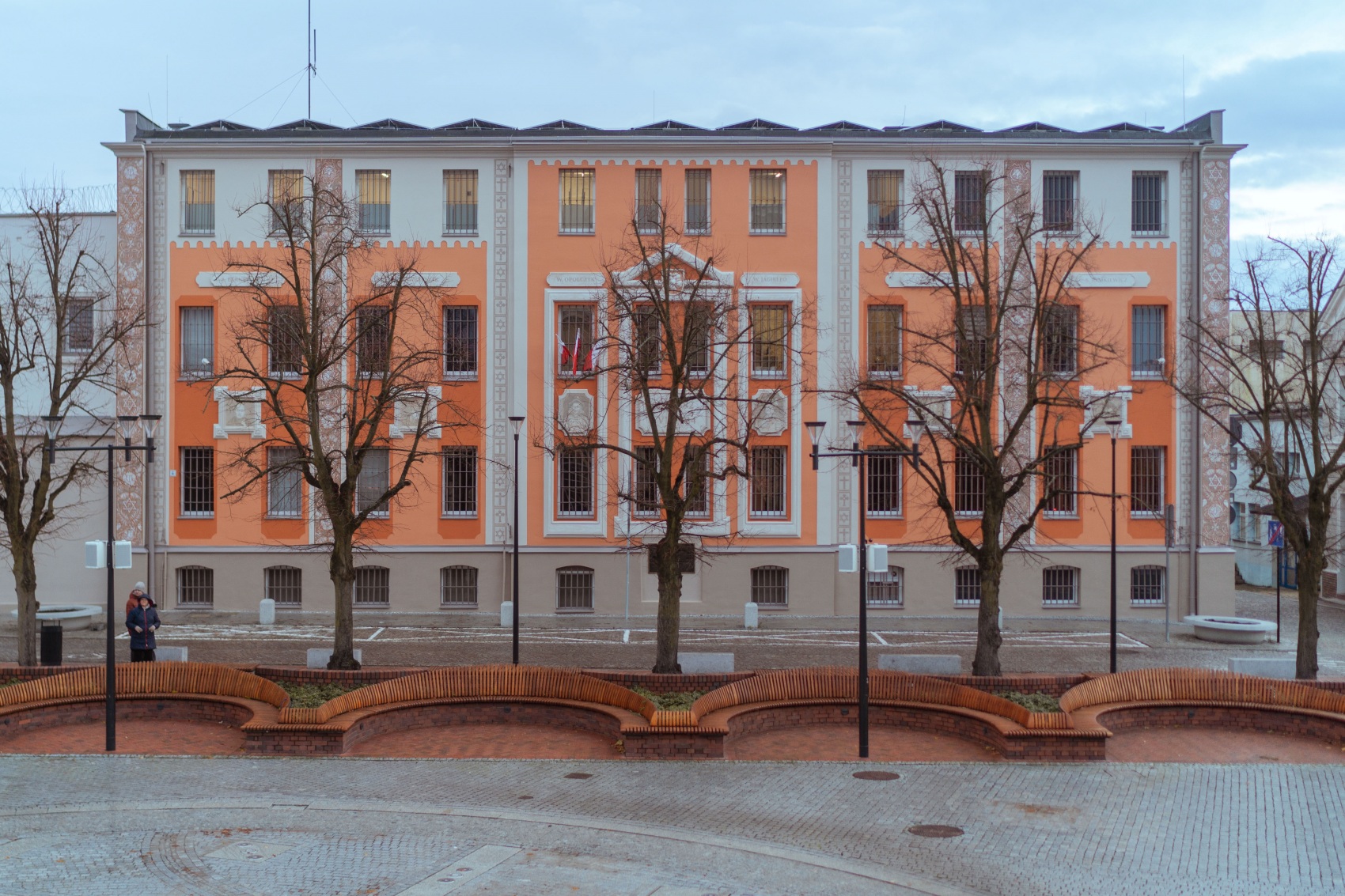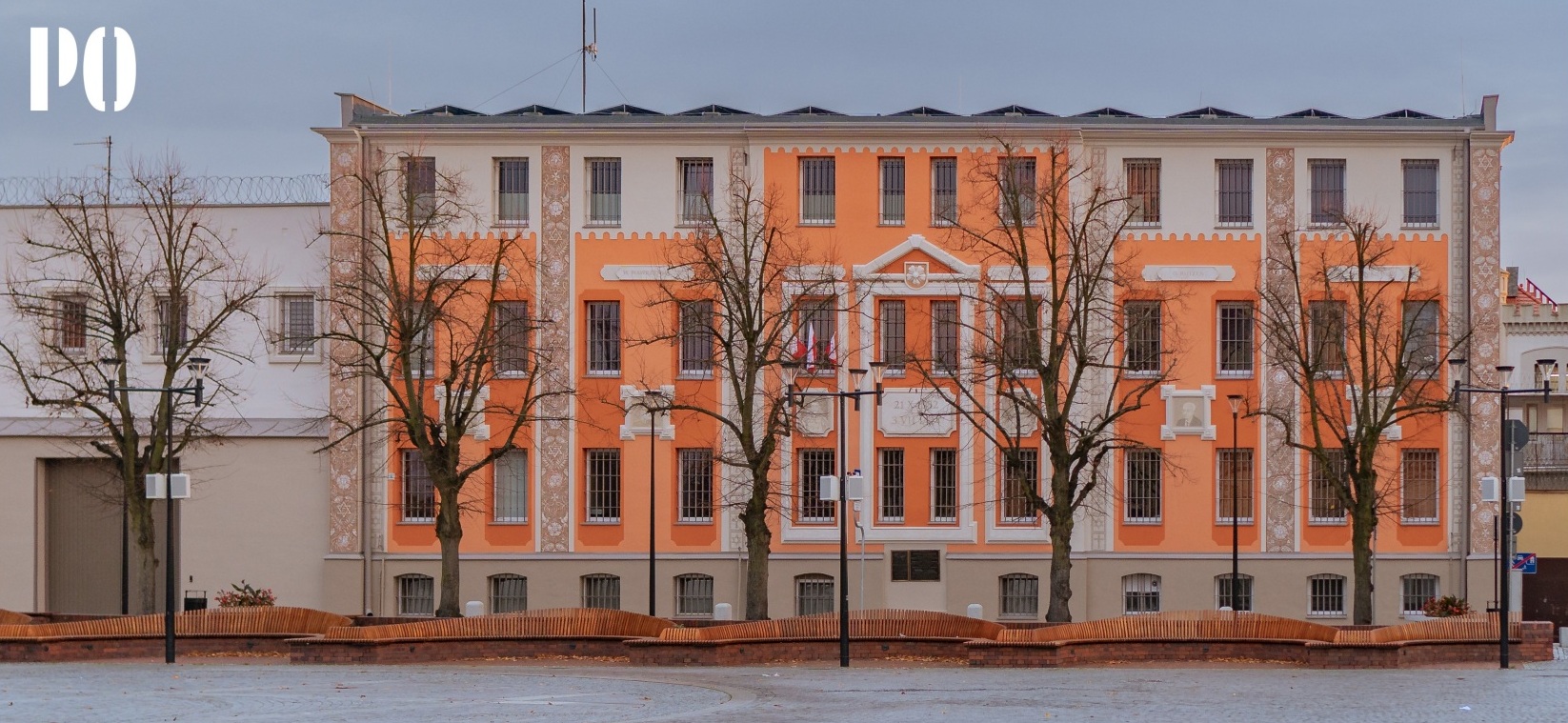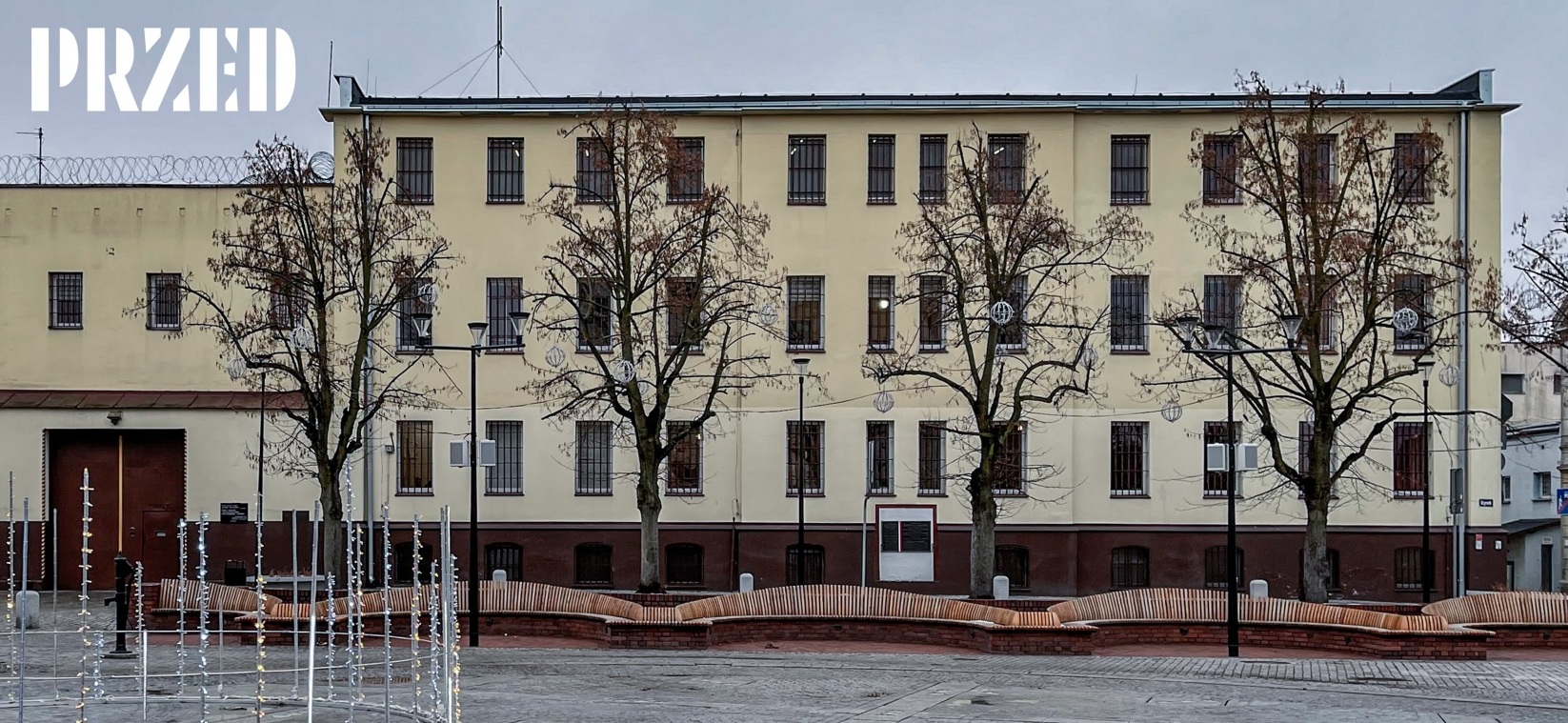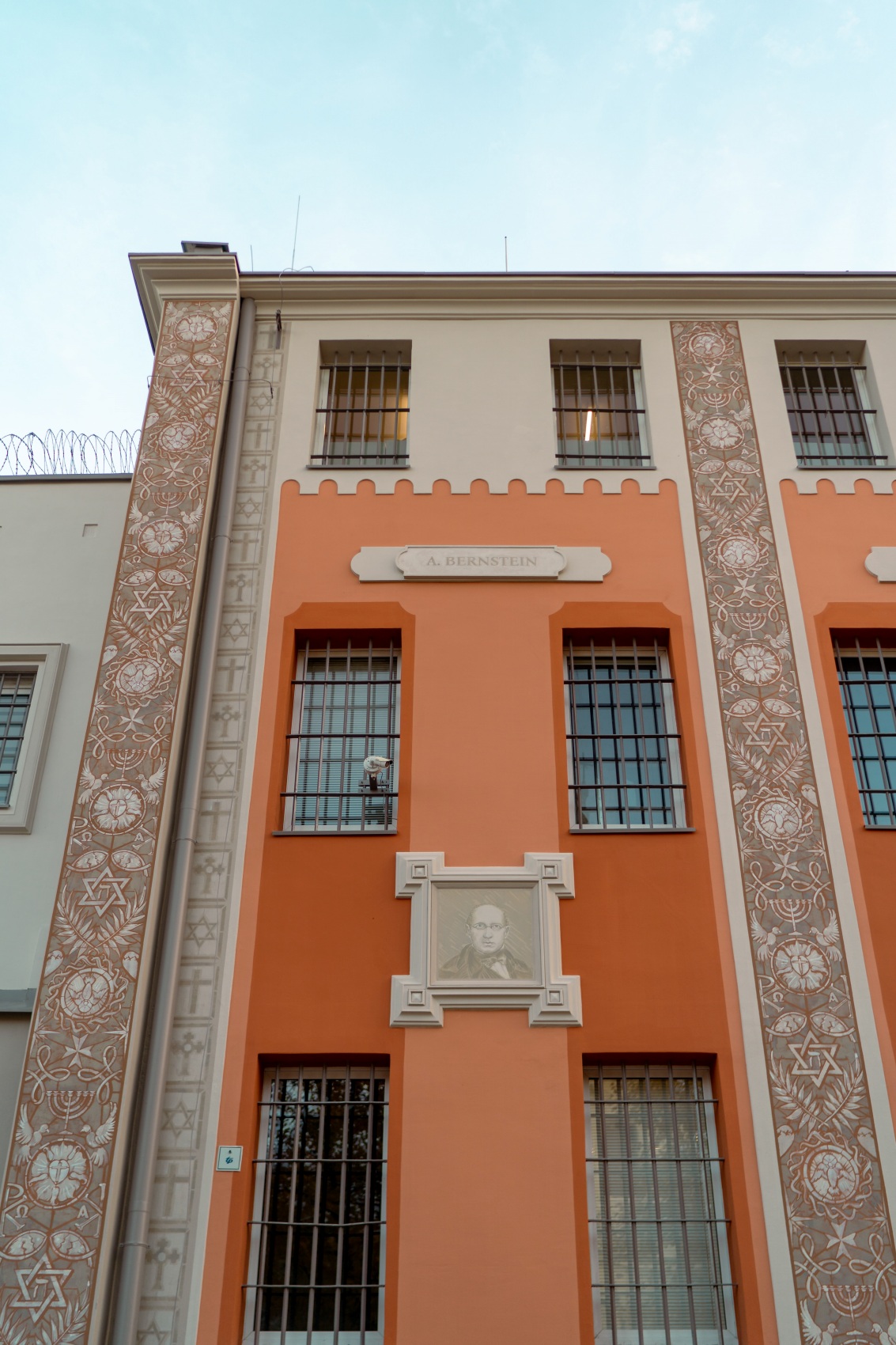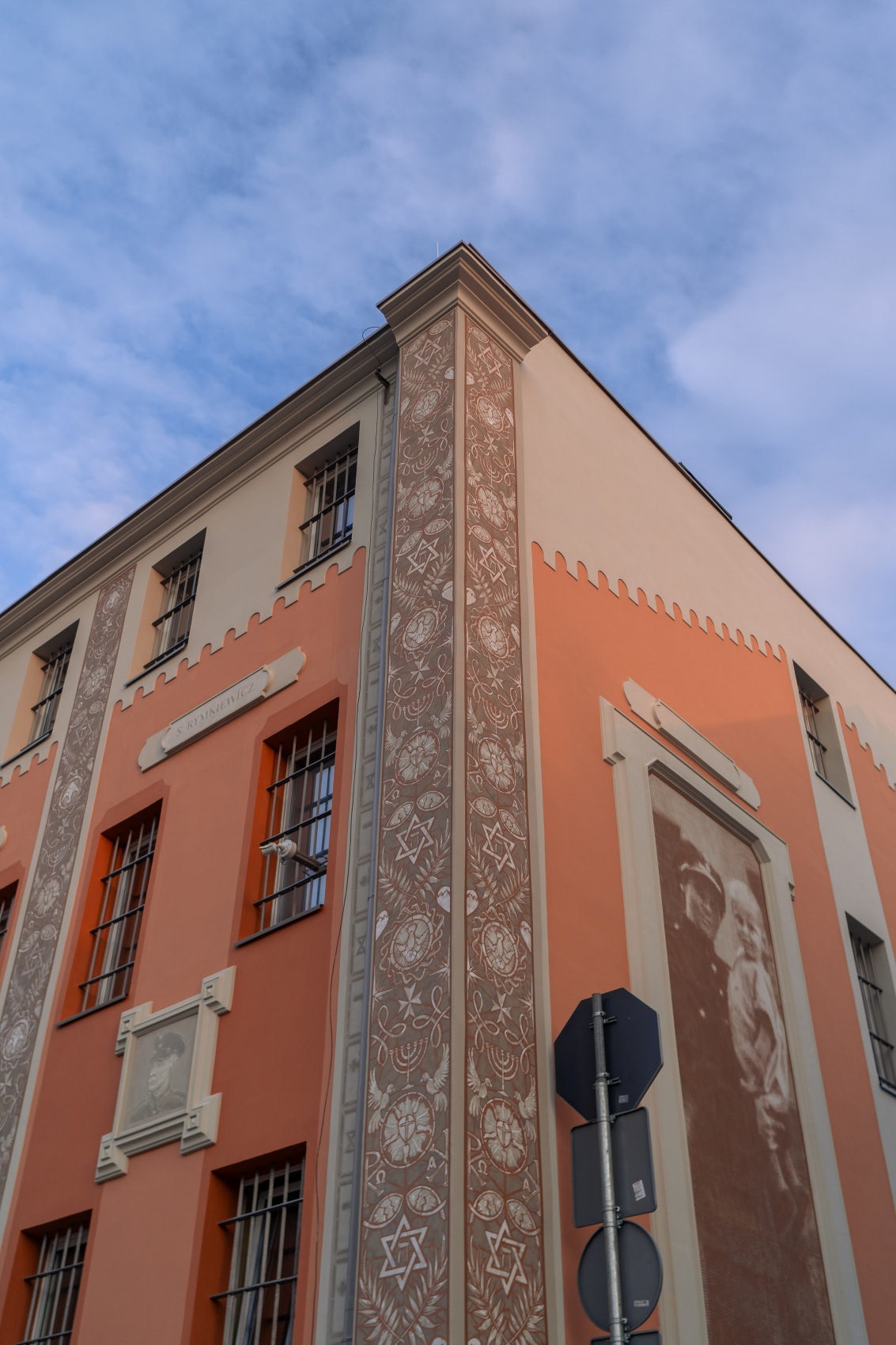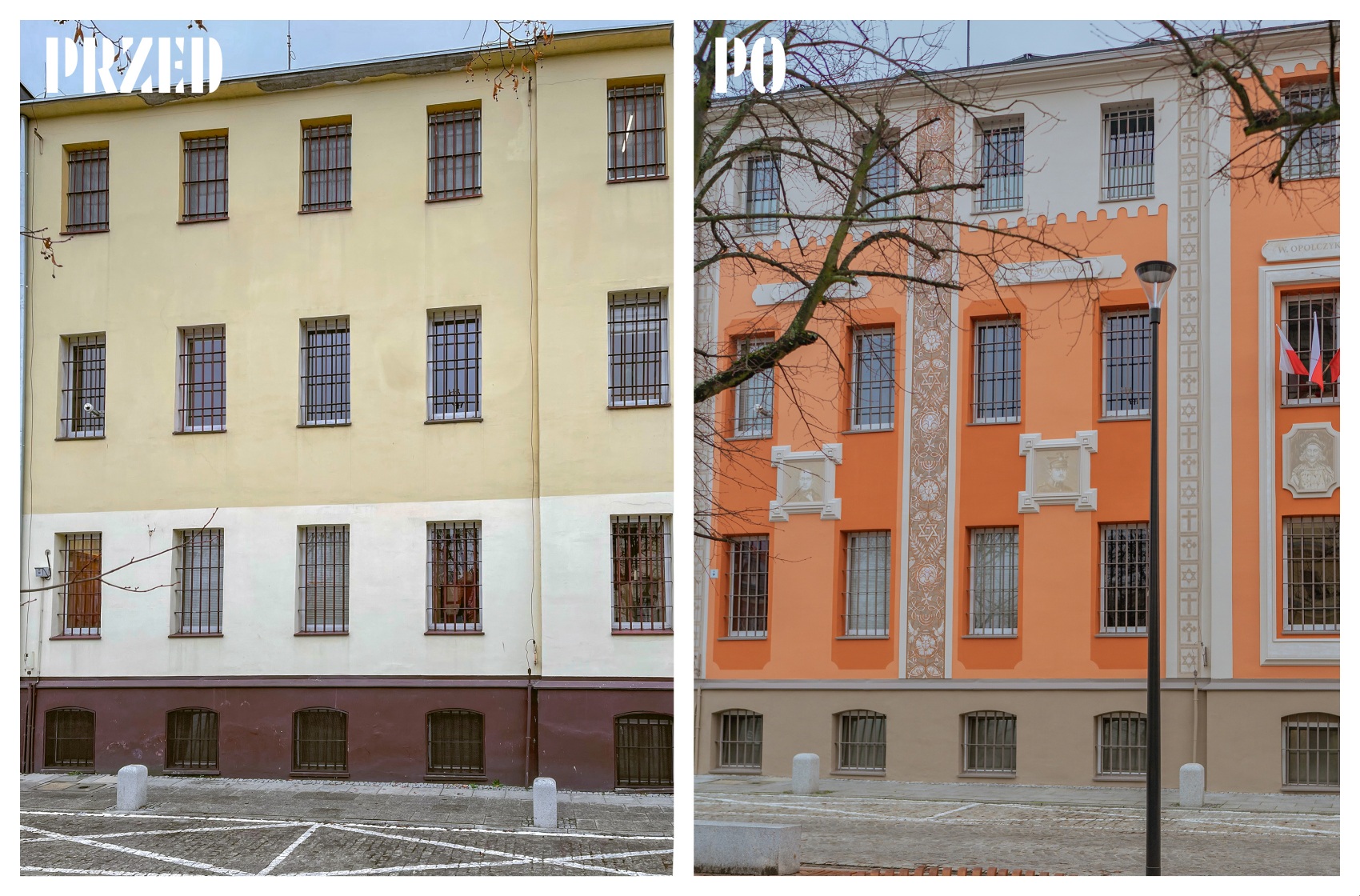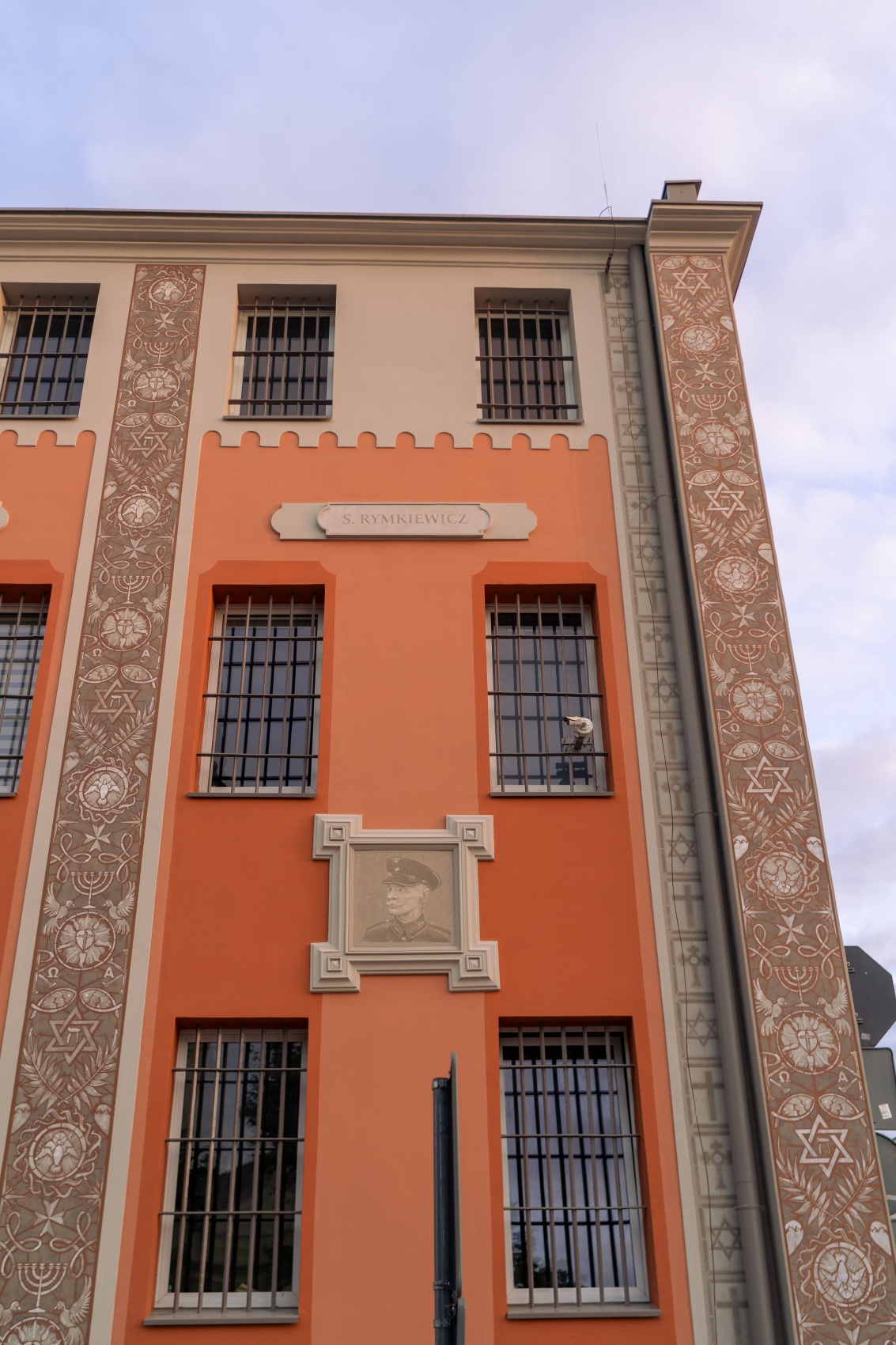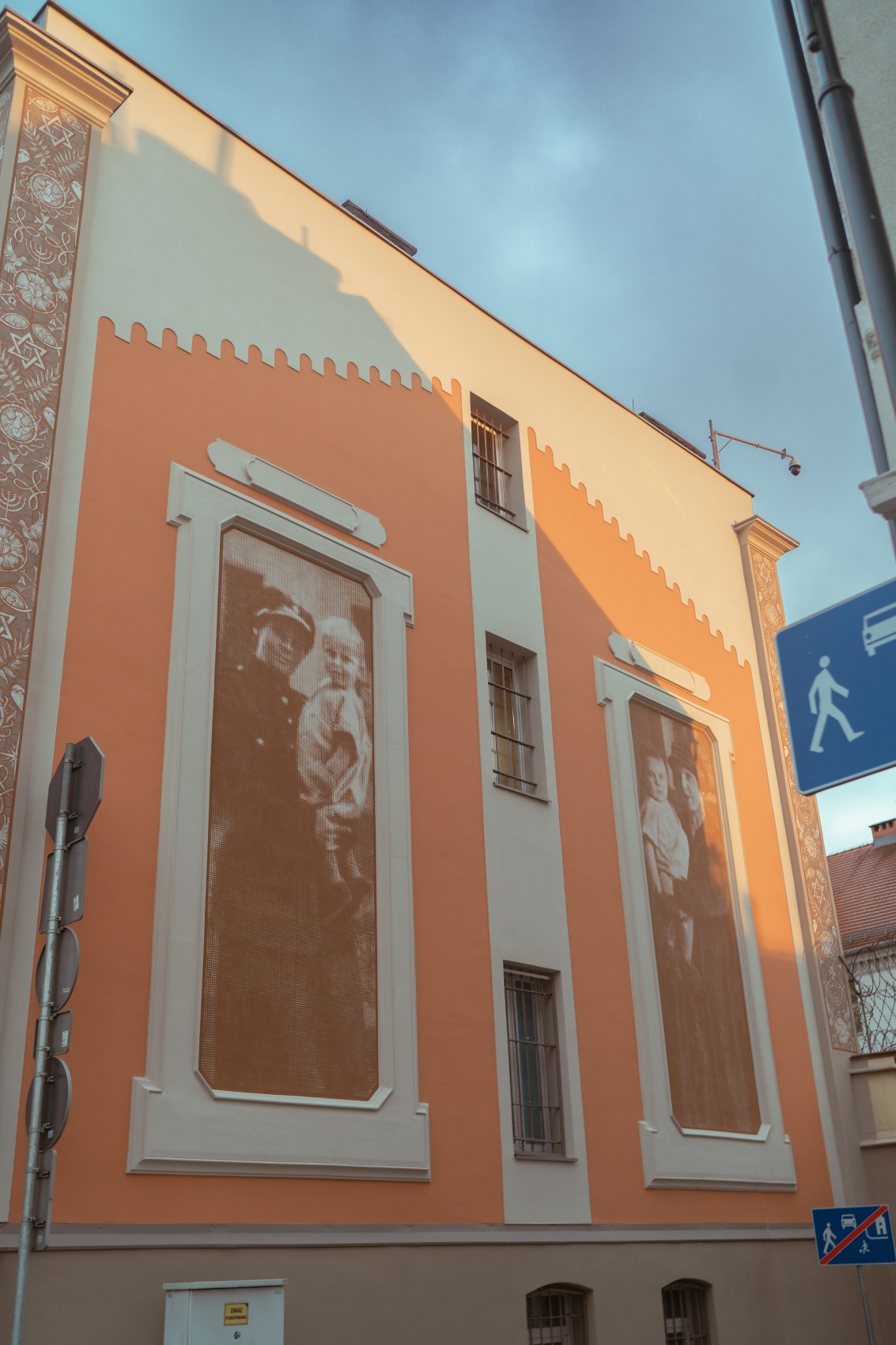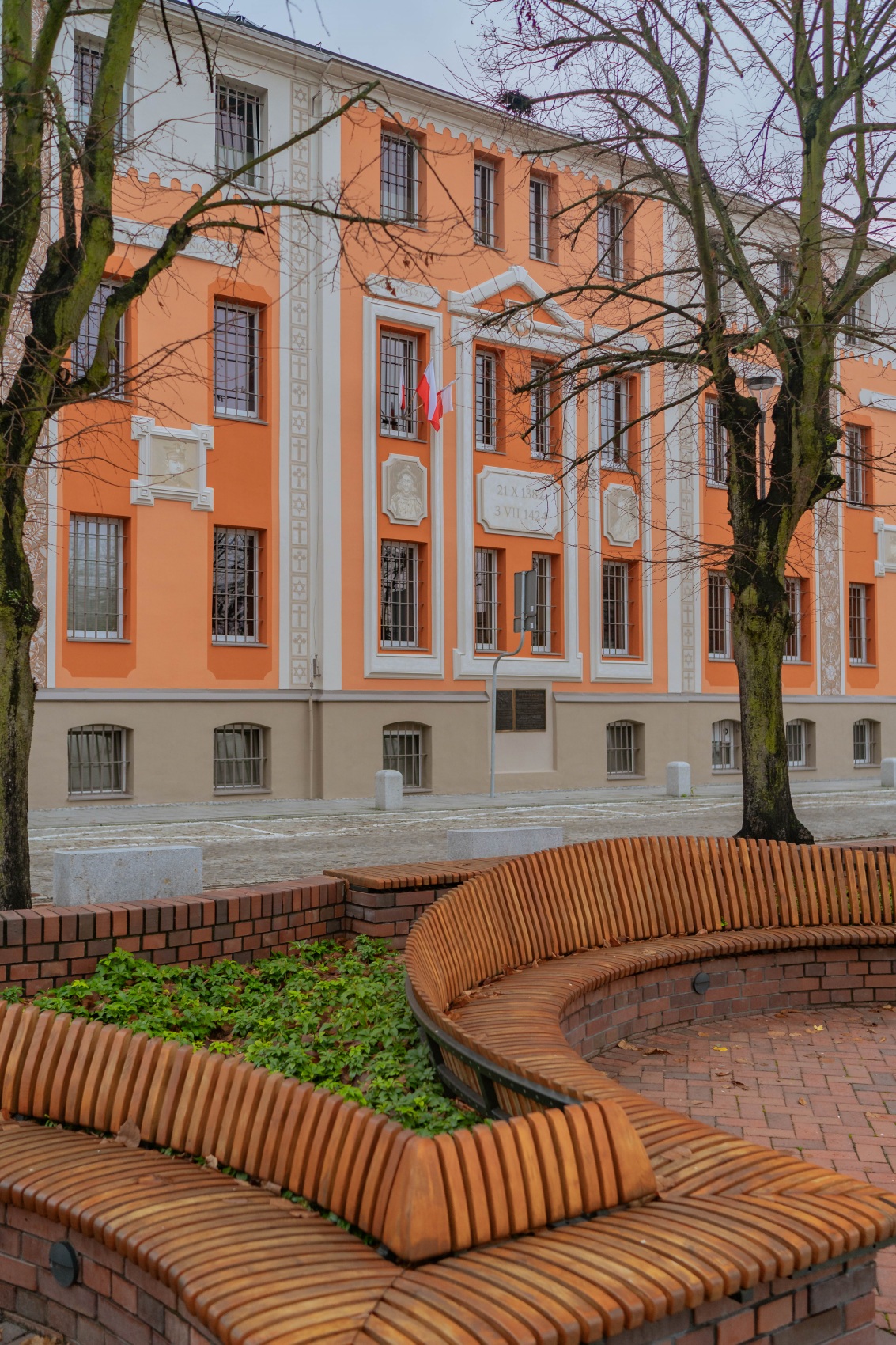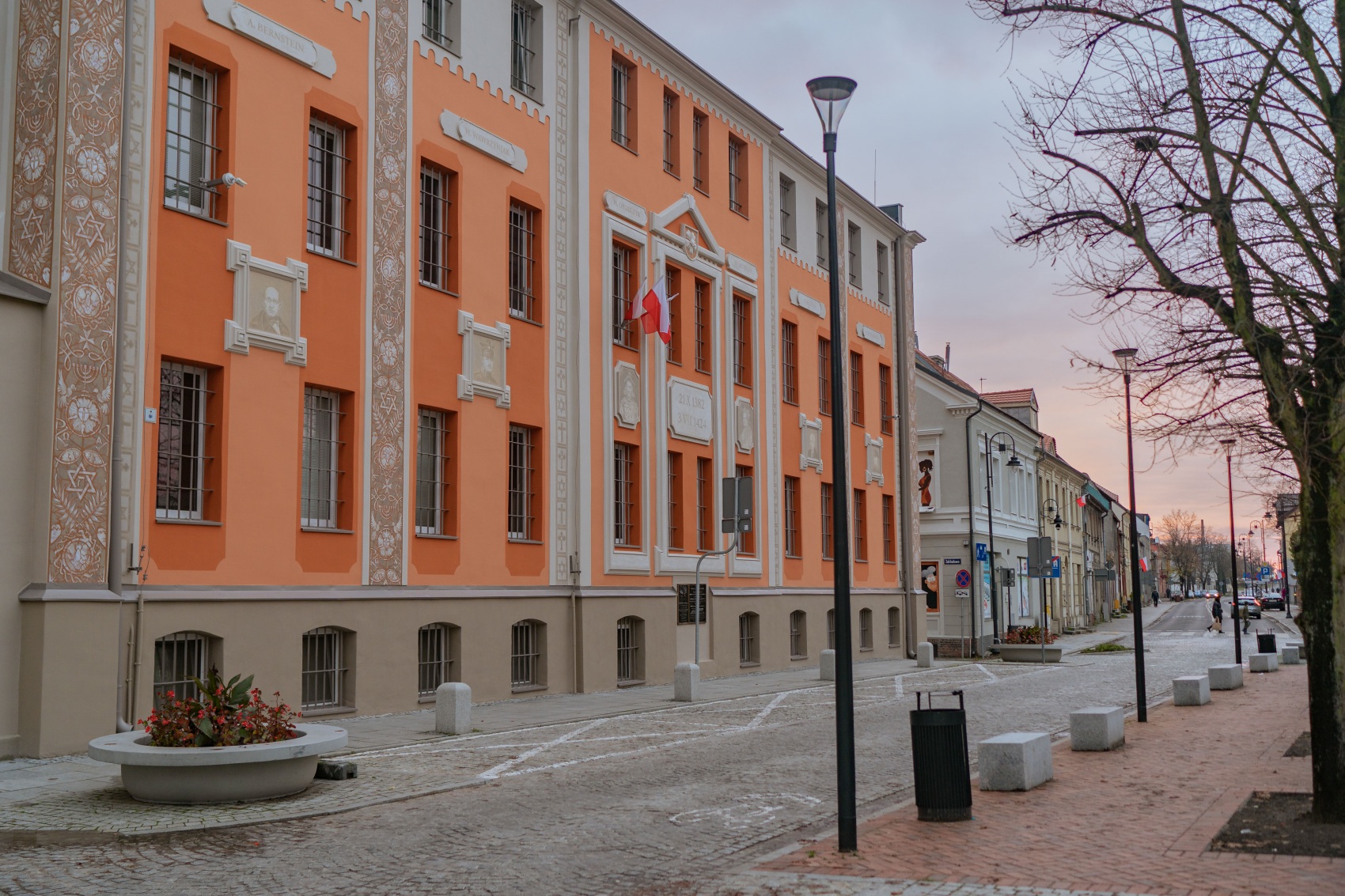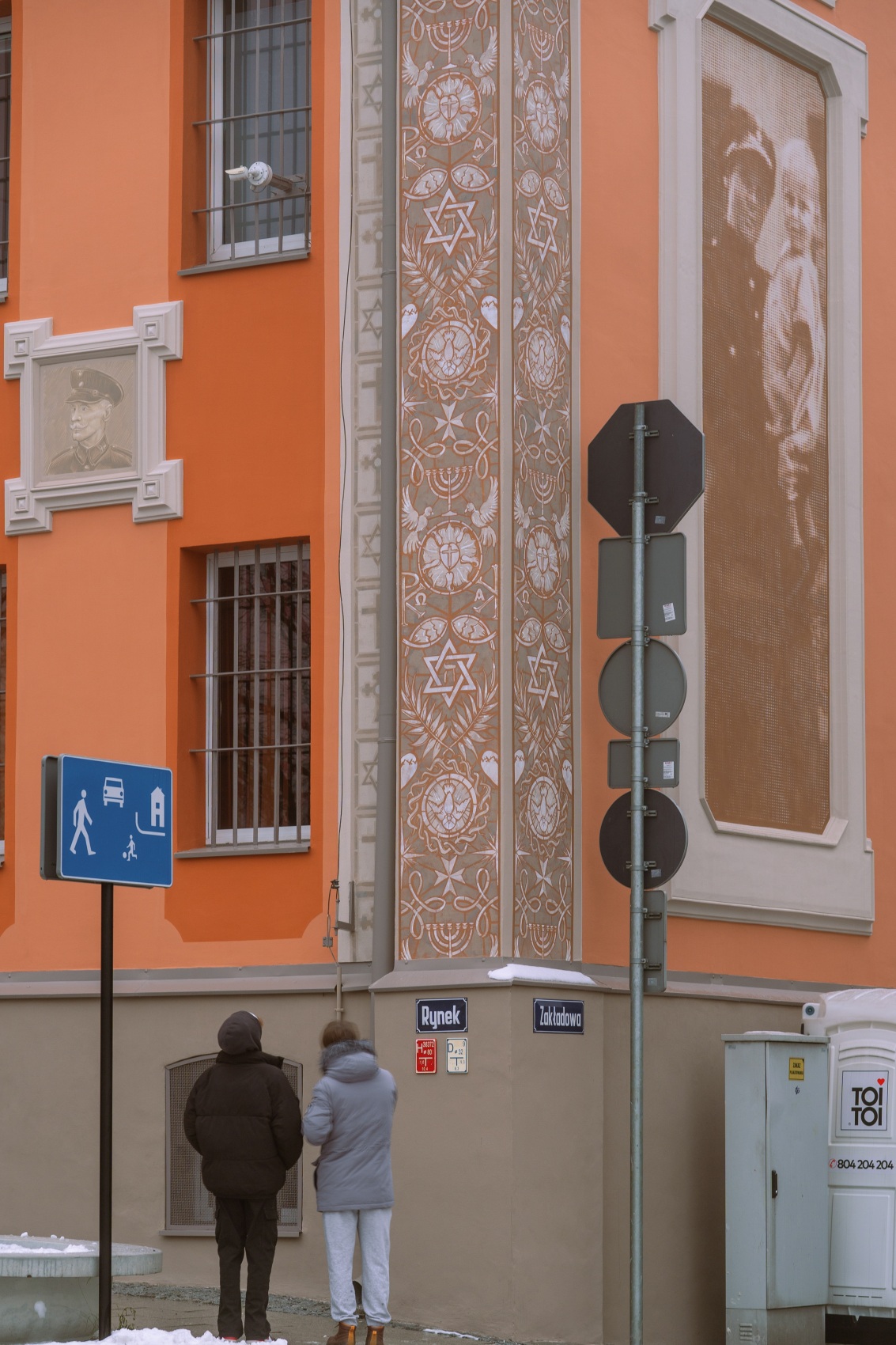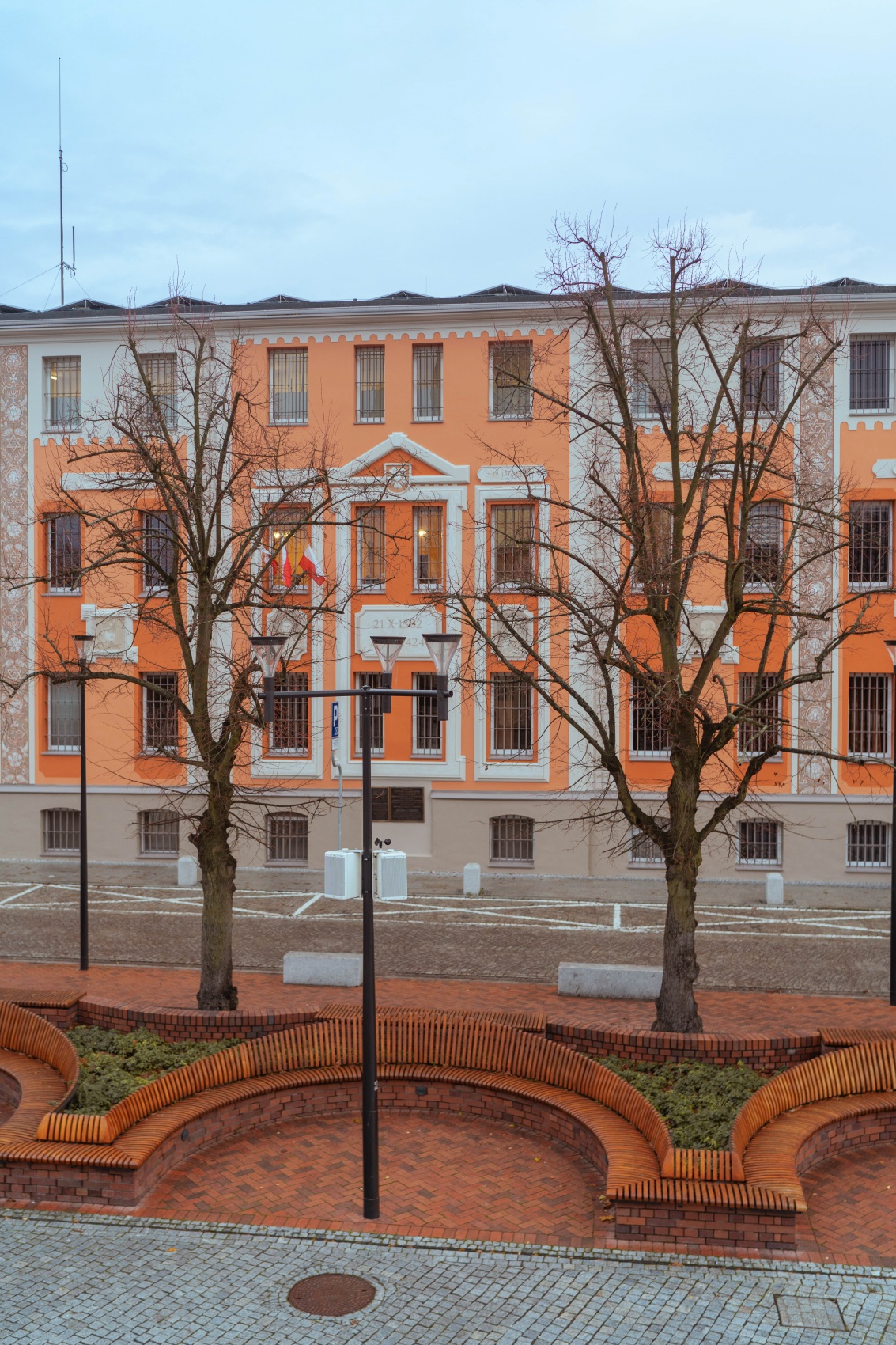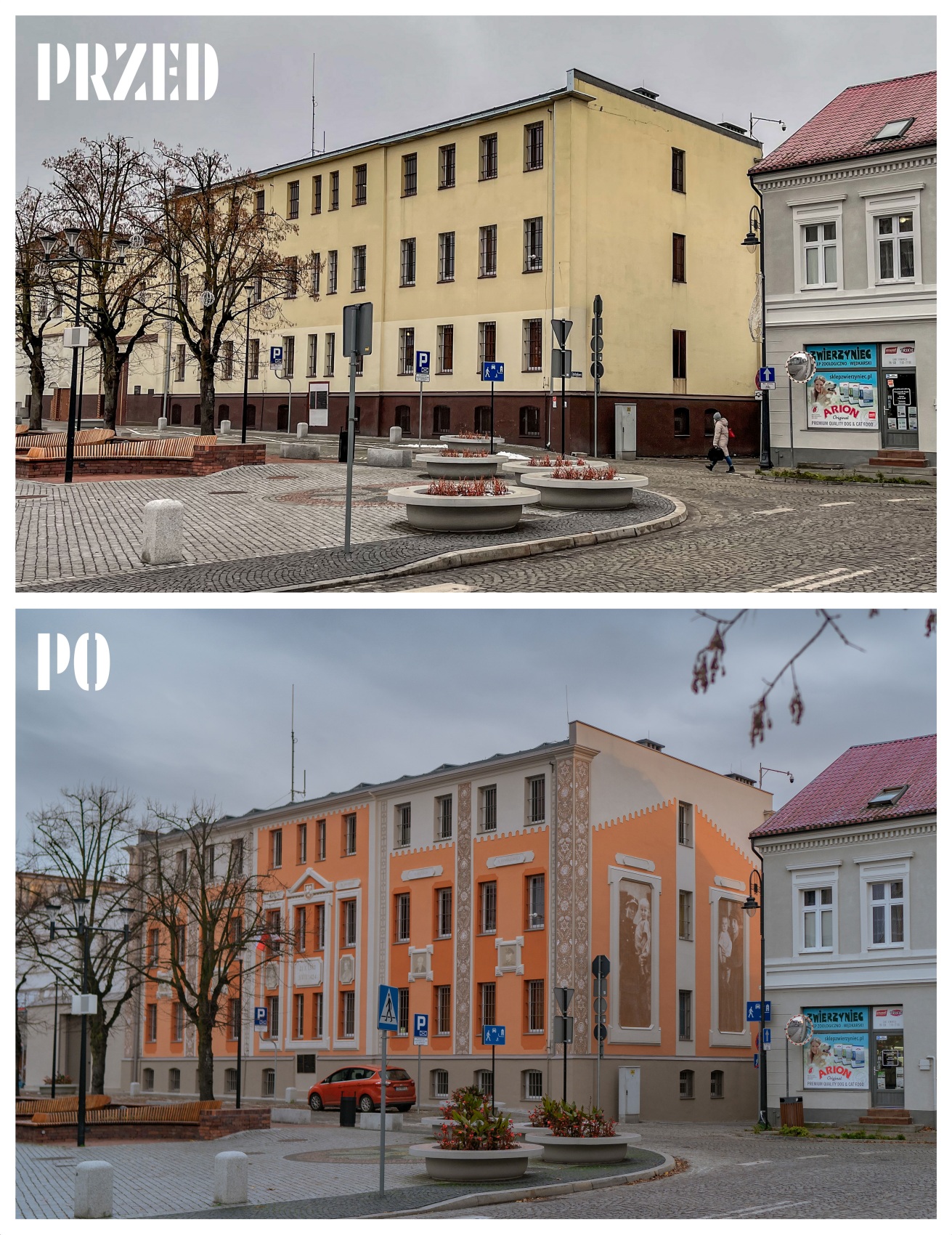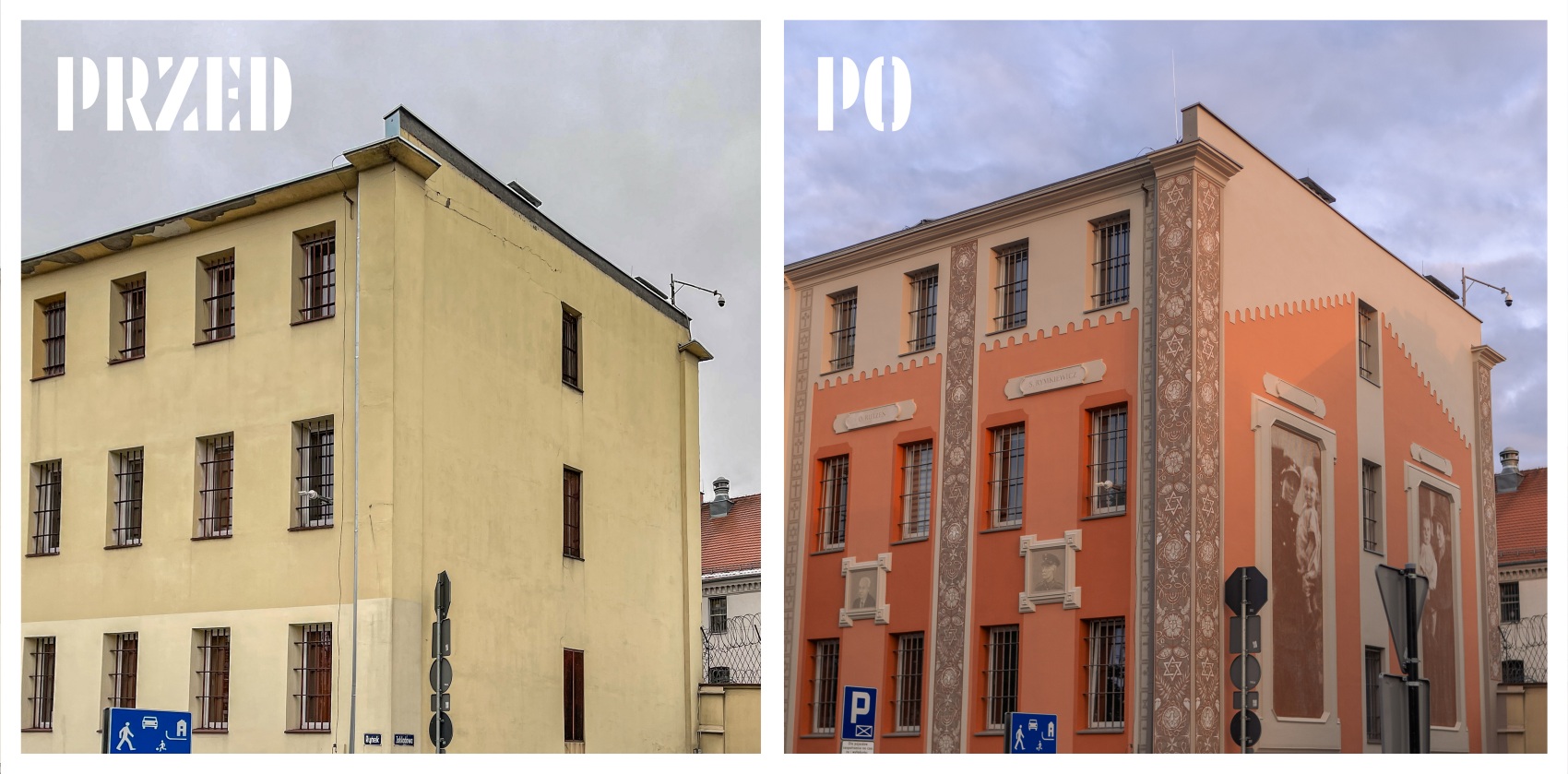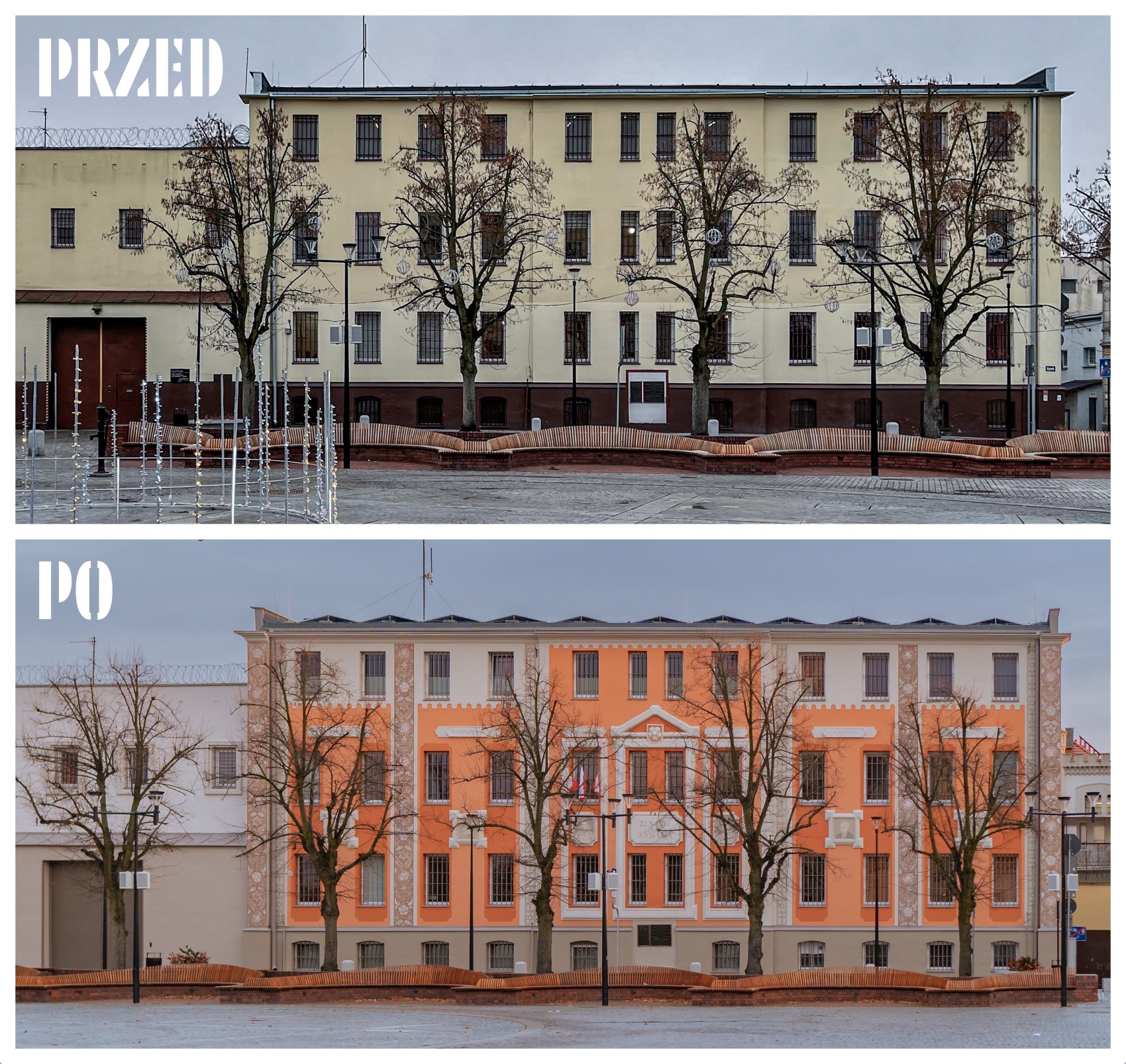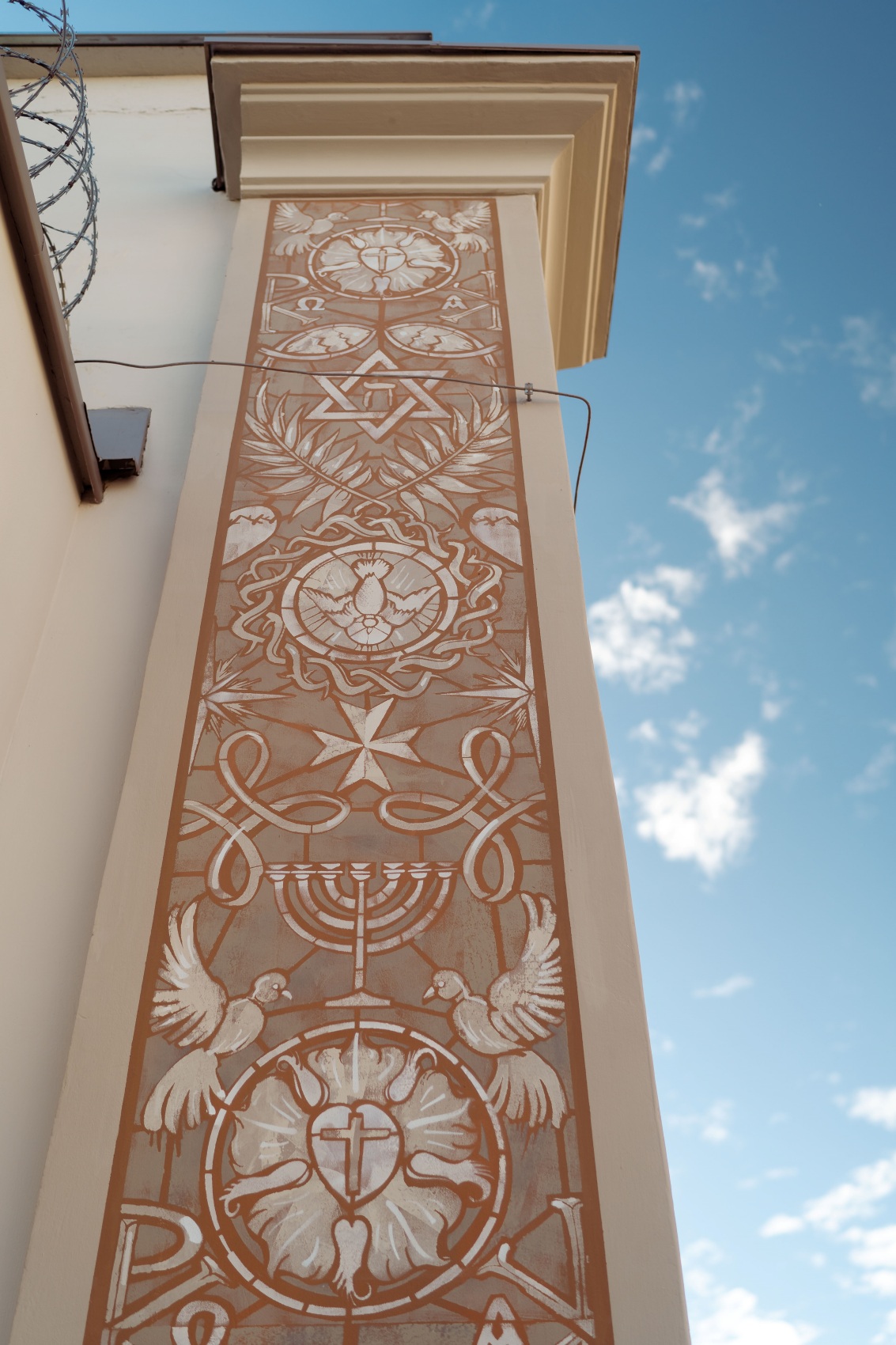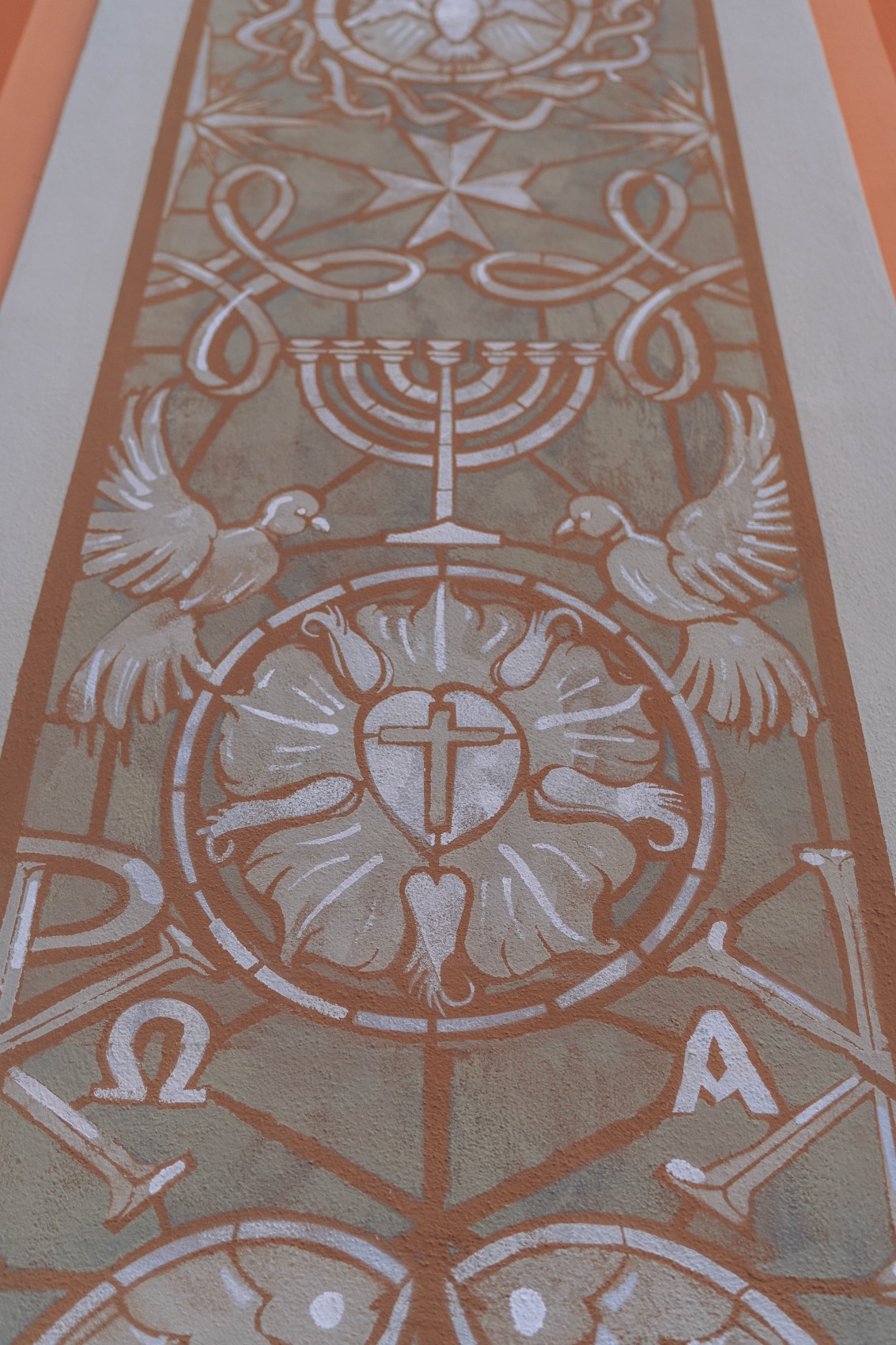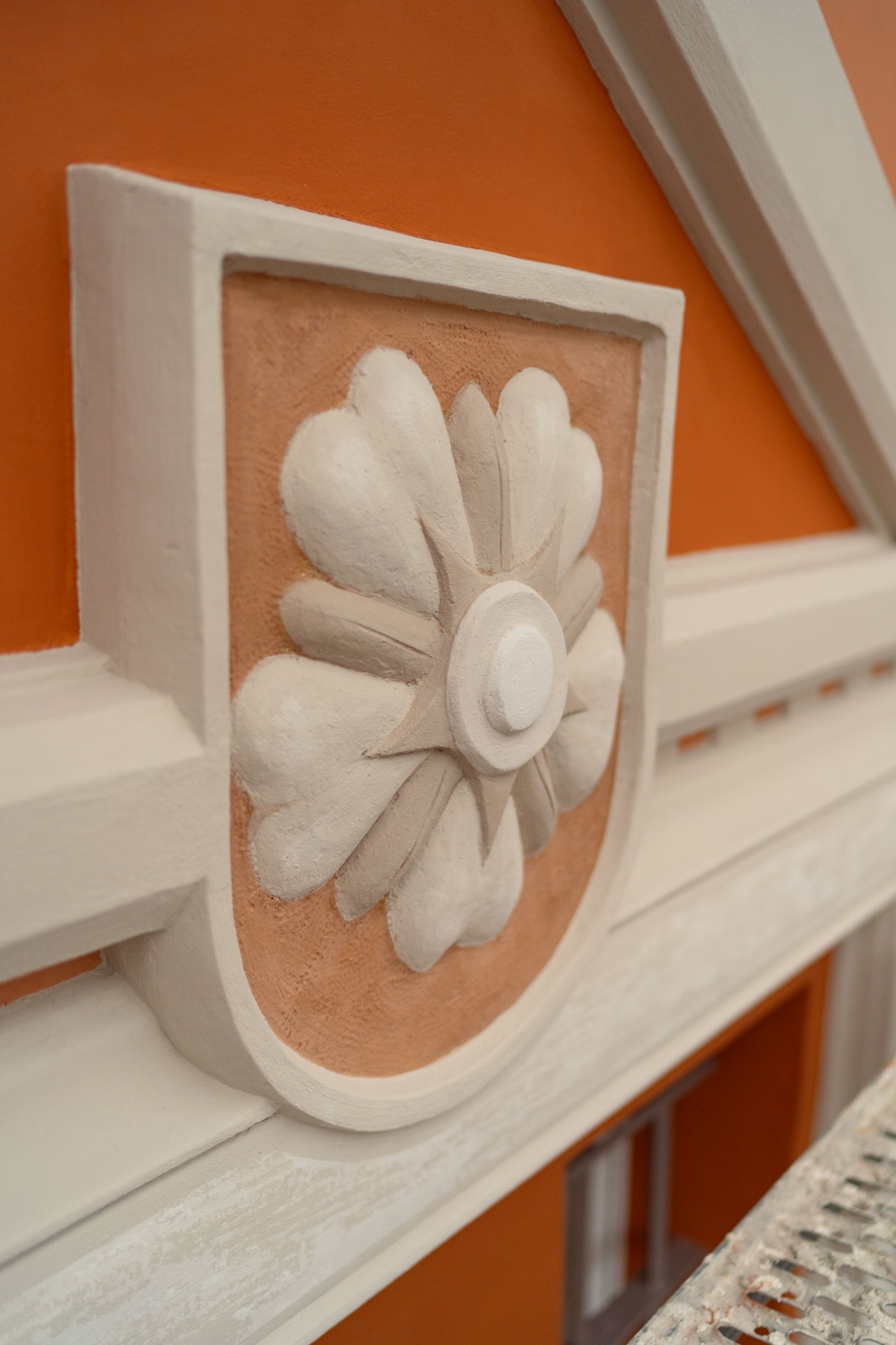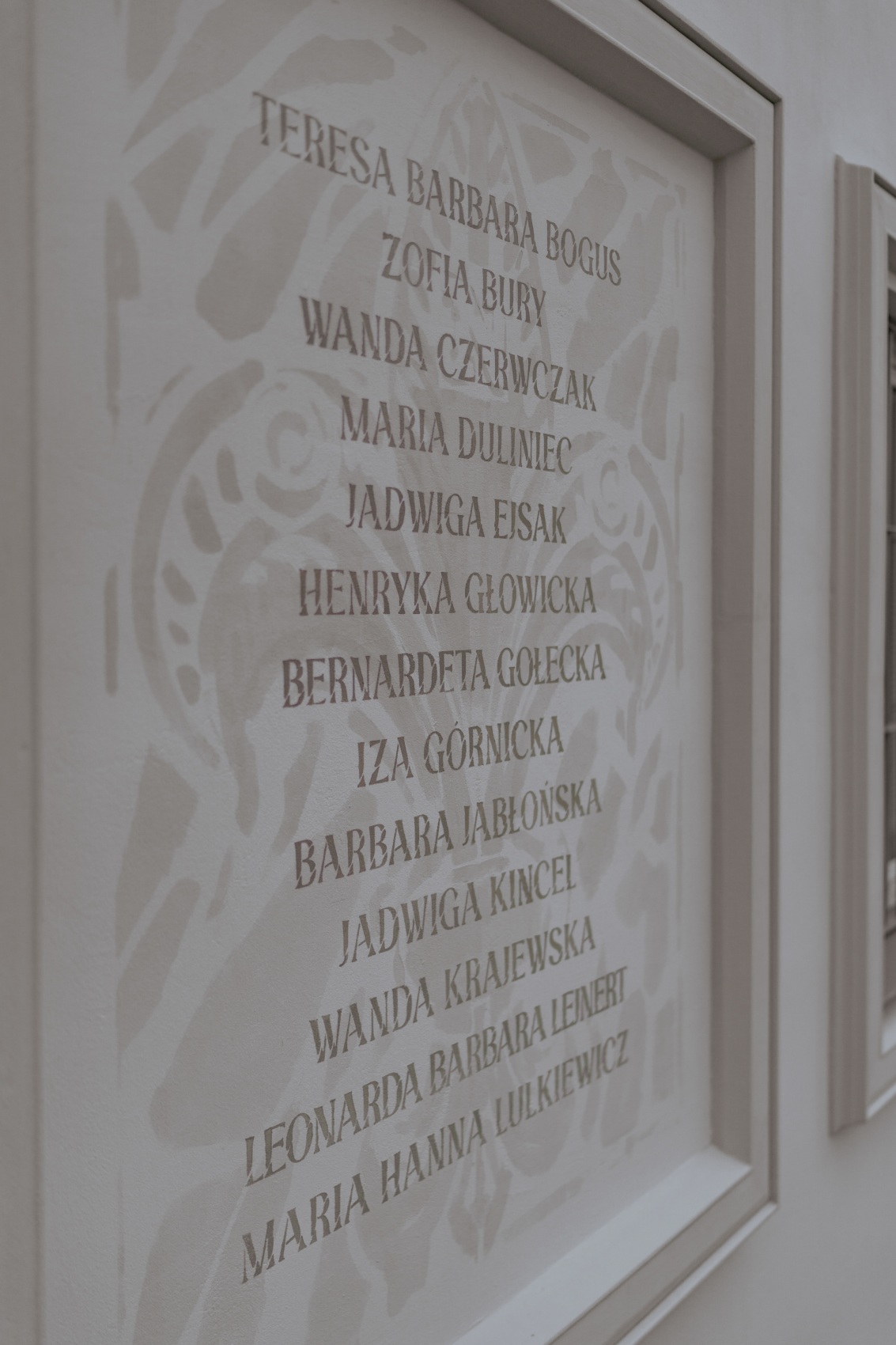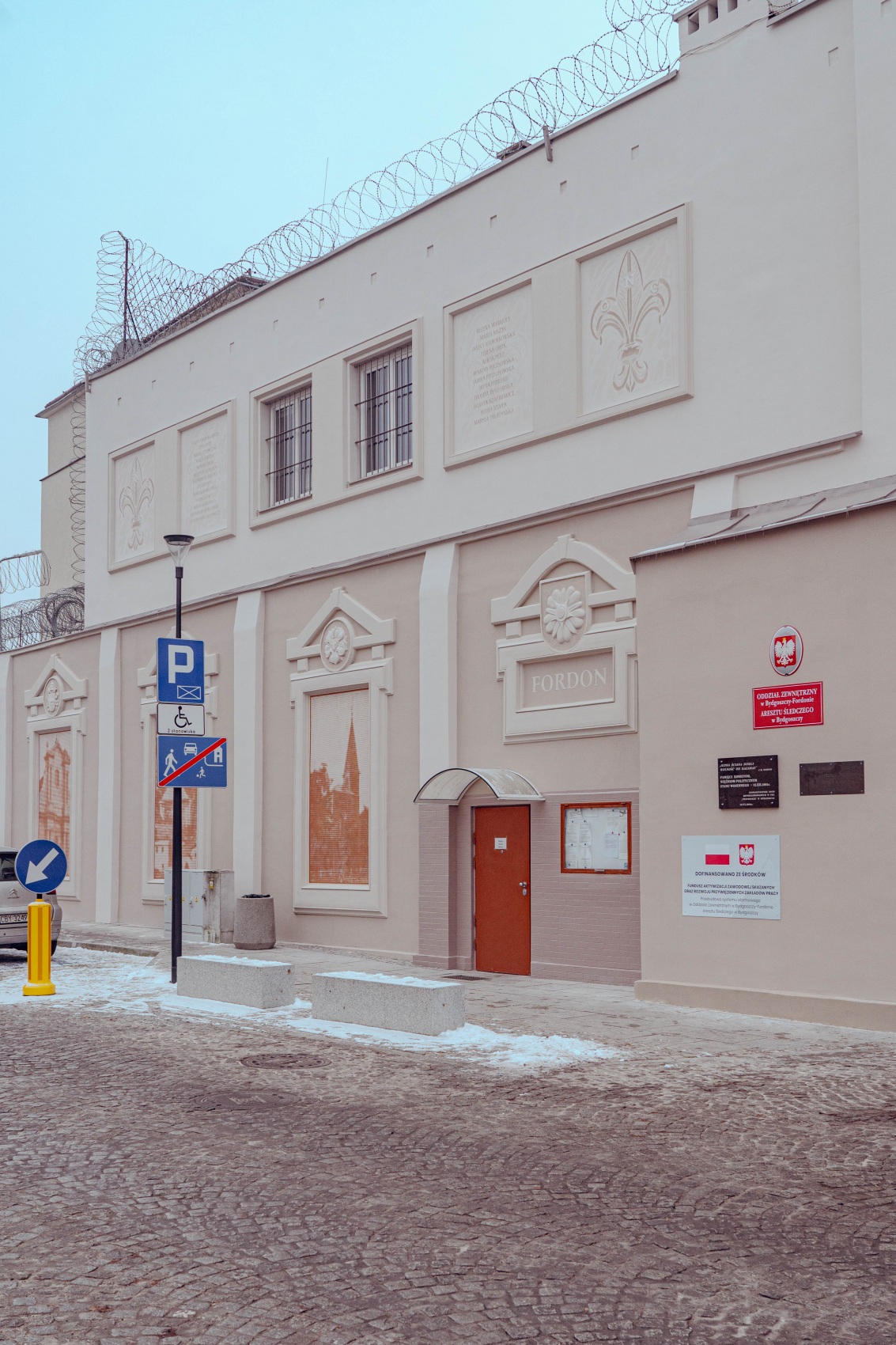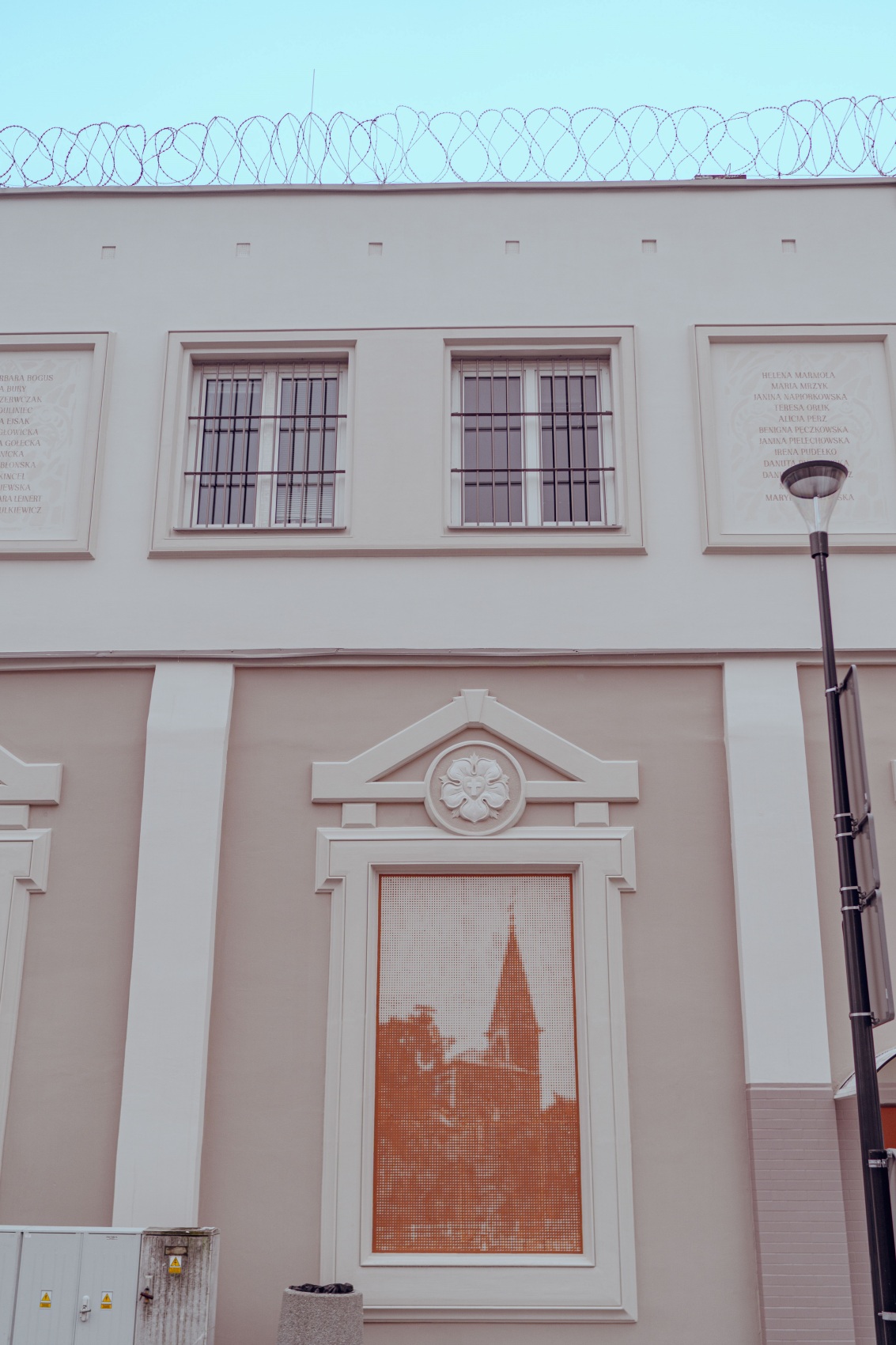The works consisted of an artistic arrangement of the front and side façade, at the southern frontage of the market square in Fordon, Bydgoszcz. They gave the detention centre a form that beautifies this part of the city.
The main design objective of the arrangement was to differentiate the appearance of the façade by bringing out the risalit of the building and optically elongating and arranging it. The strengthening of the risalit was achieved by means of colour and more stucco ornamentation, while the vertical strips with ornaments and the emphasis on the window tracts gave the building some visual height.
It is also important to take inspiration from the former height of the building. Originally, the building had an attic instead of a third floor, as evidenced by archival photographs. Artur Stec points to the side façade, where the convexity of the plaster refers to the original attic frieze. The end result was intended to gently complement but not dominate the surroundings, so:
The colour scheme was limited to warm grey tones broken up by trombone and brick colours. The shapes of the stucco decorations were inspired by decorations on other buildings in Fordon. The whole has acquired a decorative character.
On the front façade of the building, in the central part, Władysław Opolczyk and Władysław Jagiełło, who granted Fordon town rights with the dates of granting, are commemorated, while on the sides there are portraits of selected distinguished Fordon residents (representatives of the three communities that once inhabited the town).
On the side facade are archive photographs depicting a prison guard and an inmate with her children held in her arms. The murals are made using the graphic raster technique. They are intended as a reminder that there used to be a women’s prison here, where inmates were housed with their children.
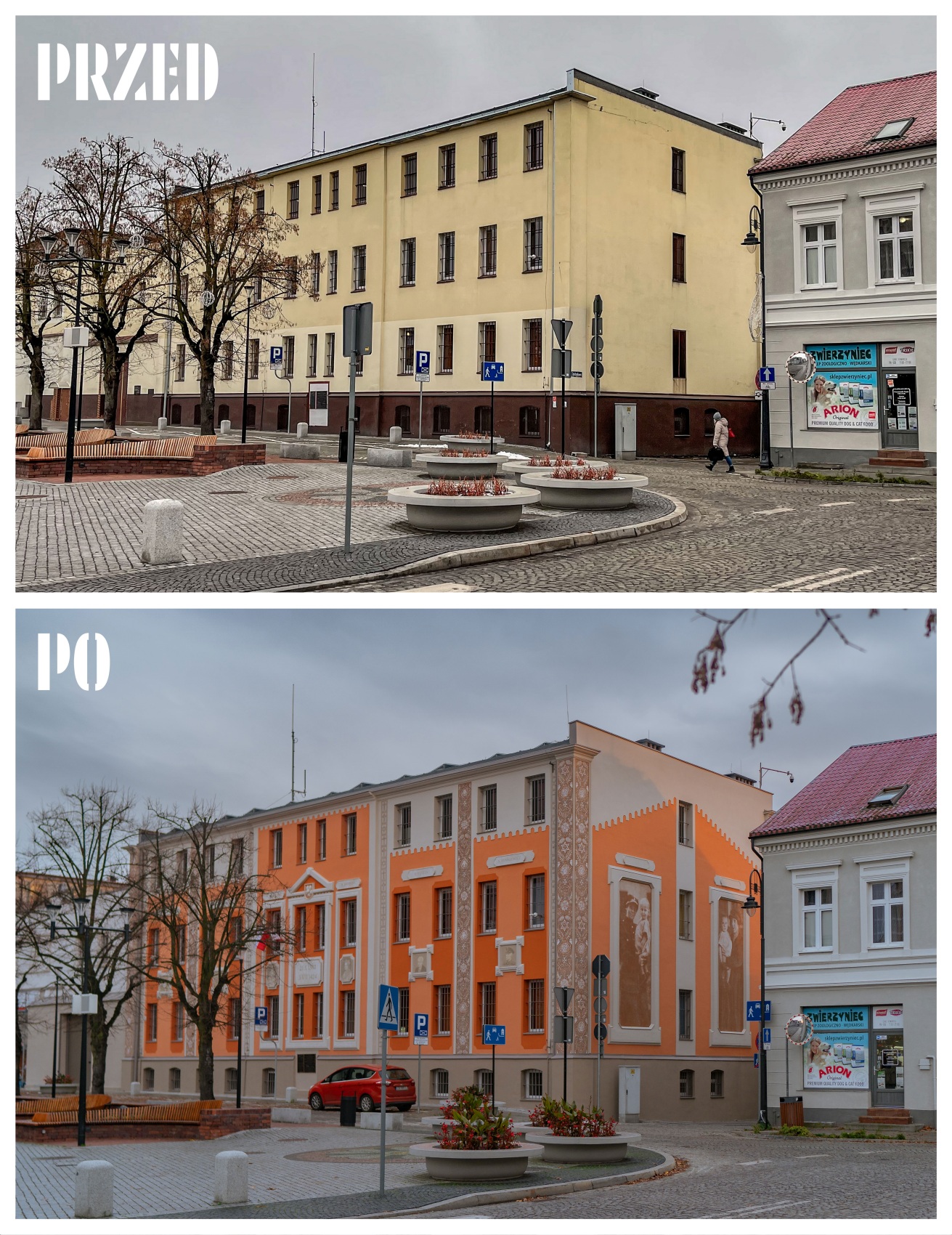
Characteristic of the work are vertical stripes with ornaments designed from religious symbols specific to the three communities that once lived in Fordon: Protestants, Jews and Catholics.
The part around the entrance gate and gatehouse commemorates the girl scouts who were imprisoned here in the 1950s, and “windows” have been made with bas-reliefs symbolising the three religions, in which archival photographs of Fordon’s three shrines: a synagogue, a Catholic church and an Evangelical church, have been presented. The murals from the photographs were made using the raster technique.
The work on the site was carried out in the second half of 2023 on the initiative of the Old Fordon Lovers’ Association with the support of the Ministry of Culture. The work was carried out by the team of the ARStec Plastic and Conservation Studio from Nowy Sącz, led by Artur Stec. The project itself was carried out in December 2022 and the first half of 2023. The author of the project is
Artur Stec.
design and realisation: Artur Stec(artstecstudio.com)(FB, Behance)
Read also: Bydgoszcz | Facade | Monument | History | Curiosities | whiteMAD on Instagram
Move the slider BEFORE and AFTER:

